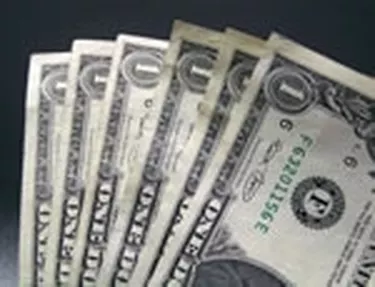
There's a lot of talk within the stock market sector about shorting properties to make money. Shorting a stock means an entity borrows shares they don't own and sells them to another investor. The hope is that the price of the stock falls, and those shares can then be bought off of the investor for a lesser price, representing a net gain when the entire scenario is taken into account. Shorting the entire currency industry is a different matter, however.
Shorting a Currency
Video of the Day
For example: an investor looks at Stock A and thinks its value is going to decrease. This investor borrows 20 shares of Stock A at $100 per share from a brokerage entity, spending $2,000. Within a few days, the value of Stock A has dropped to $75. The investor can then buy back the shorted stock at a price of (20 shares) x ($75) = $1,500. This investor has thus made $500 profit off of their original expenditure of $2,000.
Video of the Day
Like any kind of entity sold on the market, currencies can also be purchased for a number of reasons, including both investments and shorting. According to the writers at Merk Funds, currency sales are different than stock sales, since an investor doesn't have to borrow shares off of another entity; in currency trades, the investor gets to buy into an agreement to sell a set amount of currency at a contract price and on a future date.
For example, an investor might commit to purchasing Canadian dollars in the future by selling United States dollars; this implies the investor is counting on the value of the U.S. dollar decreasing and the Canadian dollar increasing, simultaneously.
How to Short the Currency Industry
The most straightforward way to short a currency is by using cash transactions and active currency exchange businesses to do your business. For example, someone in the United States is looking at worldwide markets and thinks the value of the Japanese yen will fall over a certain time period. All they need to do is obtain the U.S. cash they need, then exchange it for the Japanese yen at a currency exchange station.
Once the value of the yen drops, this individual can then trade all of their yen in cash for U.S. cash dollars. This is the simplest way to execute currency shorting, but you're reliant on the market as you do so, and might run out of short-term funds if most of them have been converted into other currencies.
If this cash method seems too limited, an investor can also open an account on a foreign exchange market and purchase other currencies using the funds within the original account. The concept is the same as the method listed above, except that foreign exchange markets deal with a number of currencies around the world, with values shifting daily. The advantage is that the investor can use their funds in a number of accounts; the disadvantage is the complexity of the marketplace itself.
Shorting the U.S. Dollar
If you're considering shorting on the U.S. dollar, you will need to consider both national and globe-wide financial changes. For example, if the U.S. is in a period of national expenditures, pertaining to everything from an increase in foreign policy to a national emergency to a global economic crisis, there may be conditions where the United States dollar might fall on the market for a period of time.
In these cases, shorting the dollar can lead to profit, as long as investors pay attention and know when to cut spending off.
Consider also: Dow Jones Short Strategies